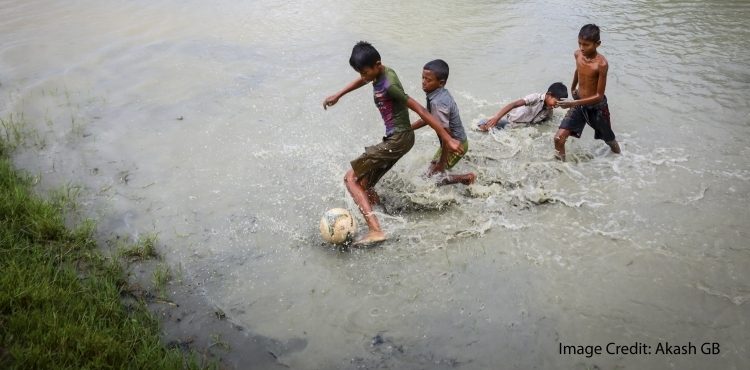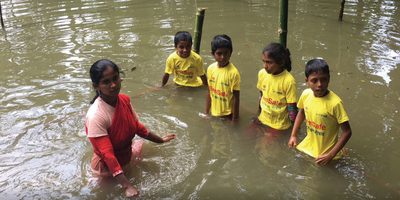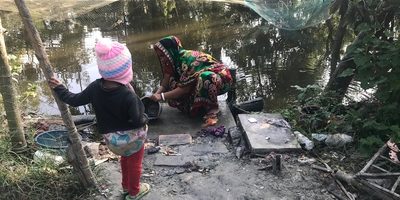
Drowning one of the leading causes of CHILD death in the Sundarbans
The study, supported by the Royal National Lifeboat Institution, UK, has underscored the need for community based interventions to end drowning in the Sundarbans. With interventions such as structured child supervision, restricting access to ponds with playpens and capacity building in community for first response can save many children.
Around 150,000 children die from drowning each year around the world, 17% of these are in India. Despite these huge numbers, there is limited data available from hospitals and police sources on drowning.
The Sundarbans is a high-risk region for drowning primarily because of its high population density, rurality, easy access to open waters and frequent flooding. “The findings of the study conducted by The George Institute along with its partner, Child in Need Institute (CINI) will inform a strategy to end drowning in the Sundarbans. Drowning has to be seen as a preventable public health issue else the gains from good immunization rates and infection controls will be lost to child drownings,” says Jagnoor Jagnoor, Research Fellow and Head of Injury Division, The George Institute, who made a presentation of the project and the study findings before the Sundarbans district authorities today.
As a first step, the Institute and its partners set out to identify the magnitude of the problem by conducting a survey in 205 villages across 19 identified blocks in the Sundarbans. The focus was on children aged one to nine years old, as global data reports high drowning risk in these ages. Community leaders were asked to identify deaths, and the survey was conducted with the family of the deceased child.
Early results suggest that 65-75% of deaths of children aged 1-9 years old are form drowning. These alarming statistics call for urgent and targeted drowning prevention measures. The survey is scheduled to be completed by end of September this year, followed by stakeholder consultations to co-design interventions. Early discussion suggests strengthening Aanganwadi’s for child supervision or providing an alternate model for child-care through Women’s self-help group. Teaching water safety skills to ages above 6 years and first responder trainings are other interventions, recommended by World Health Organization, relevant in the context.
India accounts for a significant proportion of drowning deaths worldwide.. Failure to reduce drowning deaths in children, hampers the Sustainable Development Goal 3 of ending under-5 child mortality.
The majority of child drowning deaths have been shown to occur in the North-eastern part of the country, in the Ganges delta region, where heavy monsoon rain causes frequent flooding of major rivers. This is reflected by a seasonal increase in child drowning deaths during the April to September monsoon season.
“Open water bodies and children playing near them without any supervision are a common sight in many parts of the North-East. Along with drowning specific interventions, we hope lives will also be saved through provision of piped water and programs such as Swachh Bharat.”, says Jagnoor.







